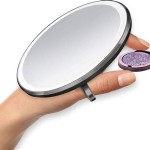How To Paint a Mirror Frame for a Distressed Look
Achieving a distressed look on a mirror frame adds character and a touch of vintage charm to any space. This technique involves layering, sanding, and applying finishing touches to create the illusion of age and wear. Whether working with a new mirror or updating an existing one, this process can transform a simple frame into a unique statement piece.
Preparing the Mirror and Frame
Proper preparation is crucial for a successful distressed finish. Begin by protecting the mirror surface with painter's tape and masking paper. Ensure the tape adheres firmly to prevent paint from bleeding onto the mirror. Next, clean the frame thoroughly with a degreasing cleaner to remove any dirt, dust, or oils that might interfere with paint adhesion. If working with a previously painted frame, lightly sand the surface with fine-grit sandpaper to create a slightly rough texture for better paint adherence.
If the existing frame has any loose or flaking paint, use a scraper or wire brush to remove these areas before sanding. For untreated wood frames, a primer may be necessary to create a consistent base for the paint. Choose a primer suitable for the frame's material, whether wood, metal, or plastic. Allow the primer to dry completely according to the manufacturer's instructions before proceeding.
Applying the Base Coat
The base coat establishes the foundation for subsequent layers and contributes to the overall distressed effect. Select a color that complements the desired final look. Lighter base coats often work well, allowing darker colors or the original frame color to show through the distressing process. Apply the base coat evenly using a brush or sprayer, ensuring full coverage. Allow this coat to dry completely before moving on to the next step.
Consider the type of paint used for the base coat. Chalk paint is a popular choice for distressed finishes due to its matte finish and ease of distressing. Acrylic paints also work well and offer a wider range of color options. Oil-based paints provide a durable finish but require longer drying times and specific clean-up procedures.
Creating the Distressed Effect
Several techniques create a distressed appearance. One common method involves applying a second coat of paint in a contrasting color and then sanding it back to reveal the base coat underneath. Focus sanding on areas that would naturally experience wear, such as edges, corners, and raised details. Vary the pressure and direction of sanding to create a more natural, uneven look. A sanding block helps achieve even pressure and prevents deep scratches.
Another technique involves using a dry brush technique with a contrasting paint color. Dip a stiff-bristled brush lightly into the paint and then remove most of the paint onto a paper towel. Lightly brush the paint across the frame's surface, creating a subtle, textured effect. This method is particularly effective for highlighting textured details and adding a layered appearance.
Applying a wax or glaze can enhance the distressed look further. Dark wax applied to crevices and recessed areas creates depth and shadow, adding to the aged appearance. Clear wax provides a protective layer and can be applied over the entire frame. Experiment with different waxes and glazes to achieve the desired level of distressing.
Protecting the Finish
Once satisfied with the level of distressing, sealing the frame protects the finish and enhances its longevity. A clear sealant, such as polyurethane or a clear wax, creates a barrier against dust, moisture, and general wear and tear. Apply the sealant evenly using a brush or cloth, following the manufacturer's instructions for drying times. Consider the desired sheen level when choosing a sealant; matte sealants preserve the distressed look, while satin or gloss finishes add a subtle shine.
Regularly dusting the frame with a soft cloth will help maintain the distressed finish. Avoid using abrasive cleaners or harsh chemicals, which can damage the paint and sealant. For more significant cleaning, a damp cloth with a mild soap solution can be used, followed by thorough drying.
Choosing Colors and Techniques
The color palette plays a crucial role in the overall effect. For a classic distressed look, consider using a neutral base coat with a slightly darker topcoat for sanding back. For a more dramatic effect, use contrasting colors or metallic paints. Experiment with different color combinations and distressing techniques on a sample board before applying them to the mirror frame to ensure the desired outcome.
The level of distressing should complement the mirror's style and the surrounding décor. A heavily distressed finish can create a more rustic or antique look, while a lightly distressed finish adds a subtle touch of vintage charm. The distressing technique should be consistent throughout the frame to create a cohesive and natural appearance.

Tutorial Create The Weathered Wood Look With Paint Transform A Mirror

How To Paint A Mirror Frame Antique White Well Purposed Woman

12 Techniques To Painting Antique Mirrors Hallstrom Home

Chalk Paint And Antiquing A Frame Painting Mirror Frames Diy Painted Picture

12 Techniques To Painting Antique Mirrors Hallstrom Home

How To Paint A Mirror Frame Gold Remodelando La Casa

Painted Mirror Using Paint Glaze To Enhance Details Sand And Sisal

How To Paint A Mirror Frame Gold Remodelando La Casa

How To Antique A Mirror Tutorial Jenna Sue Design

Ornate Mirror Makeover








